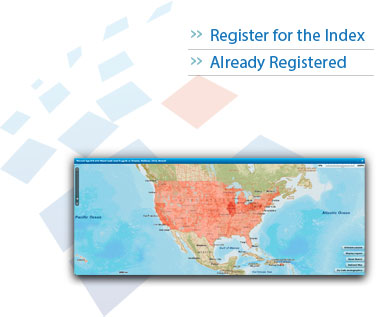



|
|
 |
Map the estimated prevalence of elevated blood lead levels in children under age six to the zip code level, further segmented by gender and race/ethnicity. |
About Lead Poisoning
It’s old, but it’s not
history
There’s a misperception that lead poisoning is a problem of the past.
This misunderstanding has resulted in undiagnosed lead poisoning and,
consequently, increased potential for developmental issues in our children.
Consider the primary source of lead poisoning: most buildings (schools, apartments, houses) built before 1978 likely have lead paint. In addition, lead can be found in soil (from leaded gasoline emissions, paint dust, and around industrial processes), drinking water (through lead solder and piping), the air (emitted by industrial sources and leaded aviation fuel) and, most surprising, in imported goods including toys, vinyl window blinds, jewelry, furniture, artificial plants and trees – anything manufactured with lead-based paint/products.
How are people exposed
to lead?
Lead paint chips and dust are a primary source of lead inside the home
every day and particularly when undergoing renovations. Lead dust from
opening windows and doors is easily ingested by small children, as children
and babies often put their hands (that may have lead dust on them) in
their mouths. Lead dust in the air can be ingested by simply breathing.
Drinking water tapped through old plumbing with lead pipes or soldering
can contain high levels of lead. Finally, imported goods manufactured
with, or tainted by, lead-based products, can be very dangerous when small
children put them in their mouths.
Outside the home, soil can be contaminated by industrial sources, deterioration of exterior lead paint on buildings or a natural high level of lead. Lead is in the air and soil around airports, ore and mining facilities and other industrial sources – even factories closed for decades.
Lead does not decay or decompose, so it is around forever.
What are the effects of
lead poisoning?
Children – If not detected early, children
with elevated levels of lead in their blood can suffer from brain and
nervous system damage that can result in behavioral, developmental and
learning problems. Children can also exhibit slow growth, hearing problems,
headaches, reduced postnatal growth, delayed puberty, and in rare acute
cases, seizures, coma and even death.
It is important to note that often children don’t show symptoms of lead poisoning, or they may be mistaken for those of common illnesses like a cold or flu. The best way to detect lead poisoning is to get a blood test from your pediatrician.
Pregnant Women – When exposed to lead over time, it is naturally stored in our bones along with calcium; when calcium is released from a pregnant woman’s bones, lead is also released and can expose the developing fetus. Elevated levels of lead in the blood of pregnant women can result in reduced fetal growth, lower birth weight, and possibly in preterm birth.
Adults – Adults can suffer from hearing and vision impairment, reproductive problems (in men and women), renal dysfunction, high blood pressure and hypertension, nerve disorders and memory and concentration problems.
How can I prevent lead
exposure?
Lead poisoning is entirely preventable. The key is stopping children from
coming into contact with lead and identifying and treating those who have
been poisoned by lead.
There are many ways parents can reduce a child’s exposure to lead. Lead hazards in a child’s environment must be identified and controlled or removed safely. Talk to your doctor or local health department about how to control and remove sources of lead safely.
Ensuring children have good nutrition is another way to help them combat the effects of lead. Parents should ensure their children eat healthy, low-fat foods high in iron, calcium and Vitamin C.
Additional Resources
There are many resources available online to learn more about the risks
of lead exposure, and how to protect yourself and your family. Below is
a brief list of some of these websites.
www.cdc.gov/nceh/lead/
www.epa.gov/lead/
www.leadfreekids.org/
www.nchh.org/
www.niehs.nih.gov/health/topics/agents/lead/index.cfm
www.kids.niehs.nih.gov/explore/pollute/lead.htm

a founding subscriber to the Lead Risk Index.